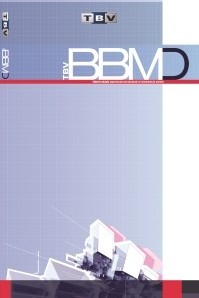Toplu Taşımada En Az Aktarma Kriterine Göre Seyahat Planlama İçin Matematiksel Model
En az aktarma modeli, seyahat planlama, toplu taşıma
A Mathematical Model for Travel Planning According to Least Transfer Criteria in Public Transportation
Least transfer model, travel planning, public transportation,
___
- Bertolini, L., le Clercq, F. ve Straatemeier, T., 2008, Urban transportation planning in transition, Transport Policy, Vol. 15.
- Muller, P.O., 2004, Transportation and urban form; Stages in the spatial evolution of the American metropolis, The Geography of Urban Transportation, The Guilford Press, New York, 86–112.
- Crane, R., Boarnet, M., 2000, Travel by Design: The Influence of Urban Form on Travel, Oxford University Press, New York.
- Vuchic, V.R., 1999, Transportation for Livable Cities, New Brunswick: Center for Urban Policy Research, Rutgers University.
- Meyer, M.D., Miller, E.J., 2001, Urban Transportation Planning: A Decision-Oriented Approach, McGraw-Hill, New York.
- Hanson, S., Giuliano, G., 2004, Geography of Urban Transportation, The Guilford Press, New York.
- Yi-Min, D.,Zhuo, D., Chang-Ping, Y., 2013, The network model of urban subway networks with community structure, Acta Physica Sinica, Vol. 62, Issue: 9, May
- Ying, Z., Jun, L., Hui, Z., 2013, Transit transfer optimization with capacity constraint consideration: Evidence from Chengdu bus, 2013 International Conference on Management Science & Engineering (20th), Harbin, P.R.China, July 17-19.
- Zhao, F., Ubaka, I., 2004, Transit network optimization minimizing transfers and optimizing route directness, Journal of Public Transportation, Vol. 7, Issue: 1, 63-82.
- Knoppers, P., Muller, T., 1995, Optimized transfer opportunities in public transport, Transportation Science, Vol. 29, Issue: 1, 101-105.
- Wang, B., Yang, X.H., 2011, A transfer Method of Public Transport Network Based on Adjacency Matrix Multiplication Searching Algorithm, WSEAS Transactions on Circuits and Systems, Vol. 10, Issue: 3.
- Li Z.W., Zhu M., 2010, Breadth-first Search Based Bus Transport Transfer Algorithm, Proceedings of the 9th WSEAS Int. Conference Applied Computer and Applied Computational Science.
- Li Y., Meng L., 2010, Least Transfer Cost Model for Optimizing Public Transport Travel Routes, 2nd International Conference on Signal Processing Systems.
- Wu, Q., Hartley, J., 2004, Using K-shortest Paths Algorithms to Accommodate User Preferences in the Optimization of Public Transport Travel, Seventh National Conference of the United Kingdom Simulation Society, Oxford – UK.
- Antsfeld, L., Walsh, T., 2012, Finding Multi-criteria Optimal Paths in Multi-modal Public Transportation Networks using Transit Algorithm, Proceedings of ITS World Congress, Viyana-Avusturya.
- Pallottino S., Scutella M. G., 1997, Shortest path algorithms in transportation models: classical and innovative aspects, Technical Report tr-97-06, Universita di Pisa.
- Modesti P., Scimachen A., 1998, A utility measure for finding multi objective shortest paths in urban multimodal transportation networks, European Journal of Operational Research, Vol. 111, 495-508.
- Han D.H., Yeong-Dae K., Lee J.Y., 2014, Multiple-criterion shortest path algorithms for global path planning of unmanned combat vehicles, Computers & Industrial Engineering, Vol. 71, 57–69.
- Xuewu, S., Limin, Z., Pingping, G., 2010, A Bus Transfer Optimization Model Based on Genetic Algorithm, Proceedings of the 7th International Conference on Innovation & Management, P.R.China.
- Xiaoyu, L.L.N., 2005, Researches on Railway Passenger Transit Transfer Model of Genetic Algorithm, Railway Transport and Economy, Vol.2, pp.86-89.
- ISSN: 1305-8991
- Başlangıç: 2005
- Yayıncı: Türkiye Bilişim Vakfı
Atanmış Sistemler ile Dağıtık Sistem Tasarımı ve Mevcut Sistemler ile Karşılaştırması
Mustafa Haluk AKGÜNDÜZ, Eşref ADALI
Üniversite Öğrencilerinin Devamlılığının Parmak İzi Okuyucu Cihaz Kullanılarak İzlenmesi
Meltem Kurt PEHLİVANOĞLU, Nevcihan DURU
Yazılım Mühendisliğinin Gelişimine Bir Bakış
Kriptolojik Rasgele Sayı Üreteçleri
Toplu Taşımada En Az Aktarma Kriterine Göre Seyahat Planlama İçin Matematiksel Model
